- Learning time
- 40 minutes
- First play time
- 150 minutes
Tin Goose
Designed by: Matt Calkins
In Tin Goose you are airplane industrialists, overseeing the rise of your company during the 21st century: from chaotic and accident-prone beginnings to the fuel-guzzling cloud buses we recognise today (or the 1970’s anyway).
Each player begins with a single fleet that is represented by two airplanes in their own colour. One will begin on the board – a map of the USA complete with air traffic routes – and the other remains in your possession. You also have some cash, a couple of Labor chips, and – unfortunately – you all begin with five conditions cards: these aren’t so much played as gotten rid of, as we shall see. Until you get rid of each card, it hampers your company in some way, with punitive fines or enforced actions. But we’ll come back to them shortly.
Over seven rounds in Tin Goose, each player takes one turn per round. A turn is broken into two phases: first, you play a card: each player has a hand of ten, so there are three cards that you won’t play at all. Cards are either Fleets, or Events. Adding a fleet to your company can either be a new fleet (two new planes!) or an upgrade on the old one (no new planes, but improving the health of your company when it comes to Events, below). If you add the card as a new fleet you get to remove one of your conditions cards, and thus improve the day-to-day running of your company. Each fleet card has a number of Oil and Hazard icons on it, and continuously adding fleets pushes up both the consumption and the hazard risk for when an Event occurs…
However, it’s crucial to note that fleets don’t automatically go to the active player – instead, they are sold off in a once-around-the-table auction (active player bids last). Thus money changes hands, prices are forced up, and company coffers can fluctuate wildly.
Events are one of three things, and they’re universally bad: Crash and Oil both cost you money depending on the state of your company: if you’re using a lot of oil, or managing a lot of hazards, then playing an event probably won’t appeal. But if your hazards and oil are low, these events can be a cash boost and/or a way to sabotage the other players… Strike prompts a bid of Labor chips, with the winners getting cash and the losers paying fines.
Once the card is resolved, the active player takes three actions from the following list: pushing up their income on the income track (enforced by a conditions card!) taking a labor chip, taking a Bond (get $40), or placing a plane from your fleets onto the map. Adding a plane to the map expands your network outwards, gaining cash rewards for serving cities with no planes in, or cities that have demand: represented by game pieces that diminish as networks spread over the continent. You can also spend two actions to serve an international route – if your planes can fly far enough.
As the rounds continue the planes get bigger, faster, more efficient, and change from moving one stop along the flight routes (small planes) to jumping a little further (medium planes) to large planes that can hop to wherever they feel like it on the map.
At the end of the last round, Tin Goose has a scoring system – rewarding cash – based on your national and international networks: flying international routes is rewarding, but so is serving major cities in the USA. This cash is added to whatever you gathered during the game, and the player with the most money is Boss Pilot.
The guru's verdict
-
Take That!
Take That!
The auctions can get a bit feisty, the map is essentially a race to reach the best spots, but most directly - if sneakily - confrontational are the events. Played at the right/wrong time they can be a boon or a bane - takingn Bonds is already a pain because doing so costs you an action. Forced to take one because of an event doesn't cost an action, but you only get $20 instead of $40. Best avoided!
-
Fidget Factor!
Fidget Factor!
Actually pretty low. You might be waiting a while for your turn, but you're involved with everyone else's turns as well - auctions and events effect everyone, and you need to keep an eye on the map to try and work out where everyone is planning on going - and beat them to it!
-
Brain Burn!
Brain Burn!
Although the rules summary might read as fairly opaque, a single play-through of Tin Goose will get you up to speed on the rules, which aren't too heavy. Working out your strategy on the map alongside the economic state of y9our company with planes being auctioned off and oil prices hitting you where it hurts - that's where Tin Goose makes you work.
-
Again Again!
Again Again!
Cards vary from play to play, but it's one of those games where what really changes the experience and gives it depth is the player decisions.

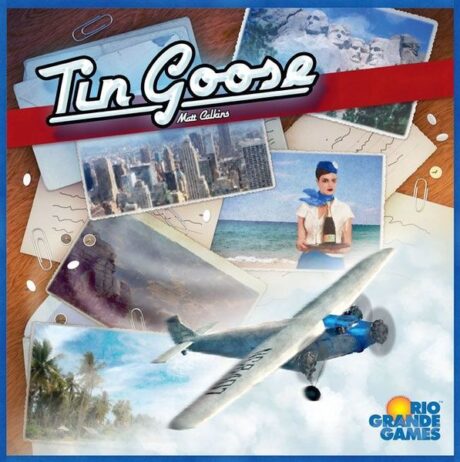

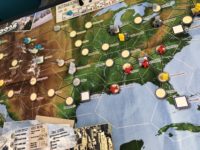
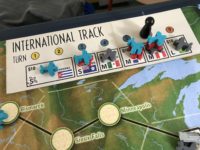
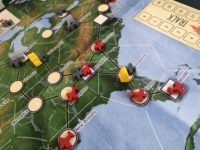
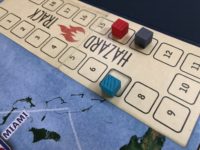
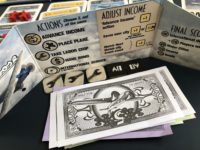



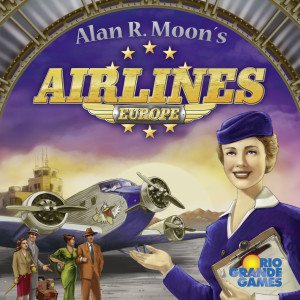
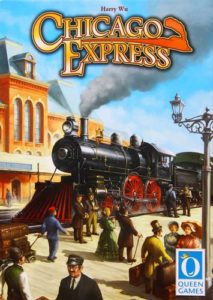

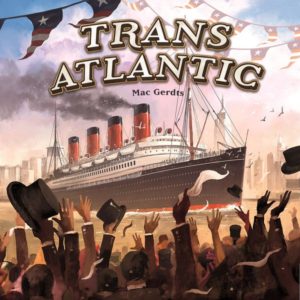
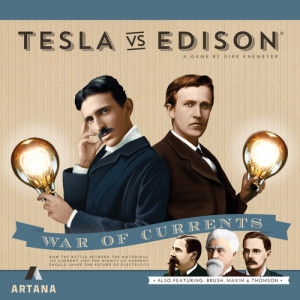
Sam says
I feel like Tin Goose is a marvellous park of gaming delights, for players who like a lot of interaction and don't mind a bit - maybe a lot - of Take That in their play. There's a big hedge to climb over for that first play, when trying to make sense of What You Should Do doesn't come as easily as many other games - but once you're over the hedge, there's a lot of fun to be had with an experience that's both thematic and idiosyncratic: how much should you bid for a fleet of planes? At first glance there's no way of knowing, but the players collectively work out what things are worth as they go, and as the game continues and the prices inevitably creep up, the games' form takes shape and things begin to make sense. It's not one I could recommend unreservedly for a light, pretzel-fuelled family Saturday night - but for the right group of players Tin Goose is a cracker.